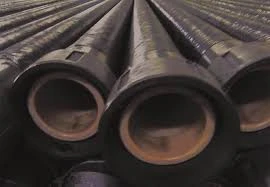
-
 Afrikaans
Afrikaans -
 Albanian
Albanian -
 Amharic
Amharic -
 Arabic
Arabic -
 Armenian
Armenian -
 Azerbaijani
Azerbaijani -
 Basque
Basque -
 Belarusian
Belarusian -
 Bengali
Bengali -
 Bosnian
Bosnian -
 Bulgarian
Bulgarian -
 Catalan
Catalan -
 Cebuano
Cebuano -
 China
China -
 China (Taiwan)
China (Taiwan) -
 Corsican
Corsican -
 Croatian
Croatian -
 Czech
Czech -
 Danish
Danish -
 Dutch
Dutch -
 English
English -
 Esperanto
Esperanto -
 Estonian
Estonian -
 Finnish
Finnish -
 French
French -
 Frisian
Frisian -
 Galician
Galician -
 Georgian
Georgian -
 German
German -
 Greek
Greek -
 Gujarati
Gujarati -
 Haitian Creole
Haitian Creole -
 hausa
hausa -
 hawaiian
hawaiian -
 Hebrew
Hebrew -
 Hindi
Hindi -
 Miao
Miao -
 Hungarian
Hungarian -
 Icelandic
Icelandic -
 igbo
igbo -
 Indonesian
Indonesian -
 irish
irish -
 Italian
Italian -
 Japanese
Japanese -
 Javanese
Javanese -
 Kannada
Kannada -
 kazakh
kazakh -
 Khmer
Khmer -
 Rwandese
Rwandese -
 Korean
Korean -
 Kurdish
Kurdish -
 Kyrgyz
Kyrgyz -
 Lao
Lao -
 Latin
Latin -
 Latvian
Latvian -
 Lithuanian
Lithuanian -
 Luxembourgish
Luxembourgish -
 Macedonian
Macedonian -
 Malgashi
Malgashi -
 Malay
Malay -
 Malayalam
Malayalam -
 Maltese
Maltese -
 Maori
Maori -
 Marathi
Marathi -
 Mongolian
Mongolian -
 Myanmar
Myanmar -
 Nepali
Nepali -
 Norwegian
Norwegian -
 Norwegian
Norwegian -
 Occitan
Occitan -
 Pashto
Pashto -
 Persian
Persian -
 Polish
Polish -
 Portuguese
Portuguese -
 Punjabi
Punjabi -
 Romanian
Romanian -
 Russian
Russian -
 Samoan
Samoan -
 Scottish Gaelic
Scottish Gaelic -
 Serbian
Serbian -
 Sesotho
Sesotho -
 Shona
Shona -
 Sindhi
Sindhi -
 Sinhala
Sinhala -
 Slovak
Slovak -
 Slovenian
Slovenian -
 Somali
Somali -
 Spanish
Spanish -
 Sundanese
Sundanese -
 Swahili
Swahili -
 Swedish
Swedish -
 Tagalog
Tagalog -
 Tajik
Tajik -
 Tamil
Tamil -
 Tatar
Tatar -
 Telugu
Telugu -
 Thai
Thai -
 Turkish
Turkish -
 Turkmen
Turkmen -
 Ukrainian
Ukrainian -
 Urdu
Urdu -
 Uighur
Uighur -
 Uzbek
Uzbek -
 Vietnamese
Vietnamese -
 Welsh
Welsh -
 Bantu
Bantu -
 Yiddish
Yiddish -
 Yoruba
Yoruba -
 Zulu
Zulu
Durable and Lightweight FRP Walkway Solutions for Various Applications
Exploring the Concept of FRP Walkways A Modern Solution for Infrastructure Needs
In the evolving landscape of infrastructure, safety and durability have become paramount concerns, especially in environments subjected to harsh conditions. One innovative solution that has garnered attention is the use of Fiber Reinforced Polymer (FRP) walkways. Combining strength, lightweight properties, and resistance to corrosion, FRP walkways present a modern alternative to traditional materials. This article delves into the features, advantages, and applications of FRP walkways.
FRP walkways are designed using advanced composite materials, primarily consisting of fibers such as glass or carbon, embedded in a polymer matrix. This unique combination provides several benefits. First and foremost, FRP walkways are significantly lighter than steel or concrete options, making them easier to transport and install. This reduction in weight also leads to lower structural demands, allowing for quicker construction and project completion.
Exploring the Concept of FRP Walkways A Modern Solution for Infrastructure Needs
Furthermore, the non-conductive properties of FRP materials enhance safety in electrical environments. This feature is essential for areas with a high risk of electrical hazards, reducing the potential for accidents. The slip-resistant surface of FRP walkways also contributes to safety, providing reliable footing even in wet or oily conditions. These safety features are crucial for workplaces that require compliance with stringent regulations.
frp walkway

In terms of aesthetics, FRP walkways can be tailored to fit various environments, making them a versatile choice. They can be fabricated in different colors and textures to blend seamlessly with surroundings. This adaptability enhances not only functionality but also the visual appeal of the infrastructure. Additionally, FRP can be molded into various shapes and sizes, allowing for creative design solutions that traditional materials may not permit.
The sustainability aspect of FRP walkways is another consideration worth noting. As environmental awareness grows, using materials that contribute to sustainable practices becomes essential. FRP production can be more energy-efficient than that of steel or concrete, which require high-temperature processes. Additionally, FRP's longevity reduces the frequency of replacements, leading to lower resource consumption over time.
Applications of FRP walkways span an extensive range of sectors. In transportation, they are utilized in pedestrian bridges, platforms, and boardwalks, enhancing both functionality and aesthetics. In the industrial sector, they can be found in factories, plants, and infrastructure projects, facilitating safe and efficient movement. Moreover, the marine industry frequently adapts FRP walkways for docks and piers, where resistance to saltwater and marine growth is critical.
In conclusion, FRP walkways represent a blend of innovation and practicality. Their lightweight yet strong construction, coupled with resistance to corrosion, ensures their suitability for various demanding environments. With an emphasis on safety, sustainability, and adaptability, FRP walkways are positioned to address the modern infrastructure challenges of today. As industries continue to seek out solutions that optimize performance while reducing environmental impact, the adoption of FRP walkways is likely to increase, establishing them as a vital component of future development.
Latest news
-
Exploring the Benefits of Top Hammer Drifter Rods for Enhanced Drilling PerformanceNewsJun.10,2025
-
High-Precision Fiberglass Winding Machine for GRP/FRP Pipe Production – Reliable & Efficient SolutionsNewsJun.10,2025
-
FRP Pipes & Fittings for Shipbuilding - Corrosion-Resistant & LightweightNewsJun.09,2025
-
Premium FRP Flooring Solutions Durable & Slip-ResistantNewsJun.09,2025
-
Premium Fiberglass Rectangular Tanks Durable & Lightweight SolutionNewsJun.09,2025
-
Tapered Drill String Design Guide Durable Performance & UsesNewsJun.09,2025









